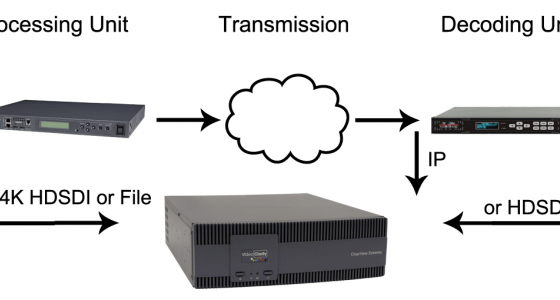The buzz about 4K is at full volume now – how to record it; how to edit and package it; how to display it. And there is another consideration: how to test it for quality. Even though there is no widespread distribution of 4K content yet, that day is rapidly approaching, and broadcasters and equipment manufacturers alike have to be ready with equipment and workflows that will yield the most reliable, pristine signals and the best possible 4K viewing experience and also in every format on every screen. Not only do these factors affect viewer satisfaction and loyalty and, in some cases, subscriptions; they also affect ad revenue, service level agreements, and compliance. So, testing and verifying quality is no small thing for a content distributor.
The industry trend is toward more programming and more devices with varying screen sizes. At the same time, new and more efficient encoding standards will allow for additional channels over the same or smaller data rates. These trends make for a seemingly infinite number of formats to manage, making it all the more critical to put the right equipment and workflows in place now.
Broadcasters and service providers who are planning to launch 4K services are in the process of determining their ideal distribution scenarios right now, using real-world analysis and QC tools to research the technology requirements of delivering 4K content to a wide range of services: real-time TV channels delivered through cable IPTV or satellite, file-based delivery of VOD content, and streaming content over the Internet. Based on that research, they will define their workflows and assemble the right combination of gear to meet the rapidly approaching demand for 4K content.
And when those theoretical exercises become reality, and the content distributors must put their carefully planned 4K workflows into practice, they’ll use those same tools to conduct testing and QC after the content goes live. A typical content distributor could receive a program feed from a number of sources, such as a satellite, an existing network, or an uncompressed file from a postproduction process. From there the operation provides both high-bit-rate encoded video for broadcast and at the same time puts out compressed “adaptive streams” as a number of profiles, in different bit rates to support any number of OTT platforms. As time goes by, more and more of those uncompressed source streams will originate from 4K content — content that must be decoded on the fly, recorded, ingested for QC testing, and encoded using the compression codecs required by the target devices. During the testing phase, the system must provide an automated means of testing key attributes of video quality, audio quality, lip sync, and loudness.
What sort of solution can handle testing for 4K video delivery both now, in the research phase, and after the content goes live? What goes into the ideal testing tools?
Must-Have Items for Testing 4K Video Quality
Most important is the ability to ingest, record in 4K resolution, and test content from any compressed or uncompressed video source using today’s SDI-type interfaces, whether the signal comes from an IP network, a file, or an uncompressed feed from a video infrastructure. This also includes files from the editing suite, such as multiple frames of uncompressed sequences of any length, or lightly compressed mezzanine-level files.
The testing tools should also be able to decode any encoded file in the current MPEG or JPEG standards, as well as in emerging encoding standards such as HEVC. In addition, it is critical that the system be able to play back the content in every resolution required for delivery to every screen, from UHDTV and HDTV to resolutions for mobile devices.
Another important characteristic is a flexible input/output architecture that lets users test individual devices and then place them into a test network structure — either at a live broadcasting plant, a content delivery network, or in the lab of the product’s manufacturer or developer.
The ideal test solution should also support not only 4K, but the full range of resolution levels, from streaming formats for handheld devices and PCs; to today’s most active broadcast-level HD formats; to high-frame-rate HD.
The Importance of Audio Measurements
A 4K testing tool should include audio, because audio requires several tests in addition to video. In order to account for all audio variables, the testing tools must perform three key audio measurements. The first, perceptual quality testing, simulates a human perception test and creates a measurement that is as close as possible to an actual subjective study done in a standardized environment.
The second critical audio measurement is for performance, which identifies performance issues with audio devices or audio in the network chain. These tests find audio faults such as silences and glitches, and a sufficient solution should log the failures for instantaneous review. Audio performance testing also should cover lip sync measurements with millisecond accuracy.
Audio loudness testing, which has become extremely important with the adoption of global loudness standards, is the third audio measurement that the ideal test solution should include. Effective loudness testing involves applying loudness standards to every distributed program’s audio channel groupings and reporting a measurement.
When searching for a way to analyze 4K video quality, it’s important to pay attention to those characteristics. The right test solution can mean the difference between success and failure in the world of 4K content delivery.
Thought Gallery Channel:
Tech Talk
